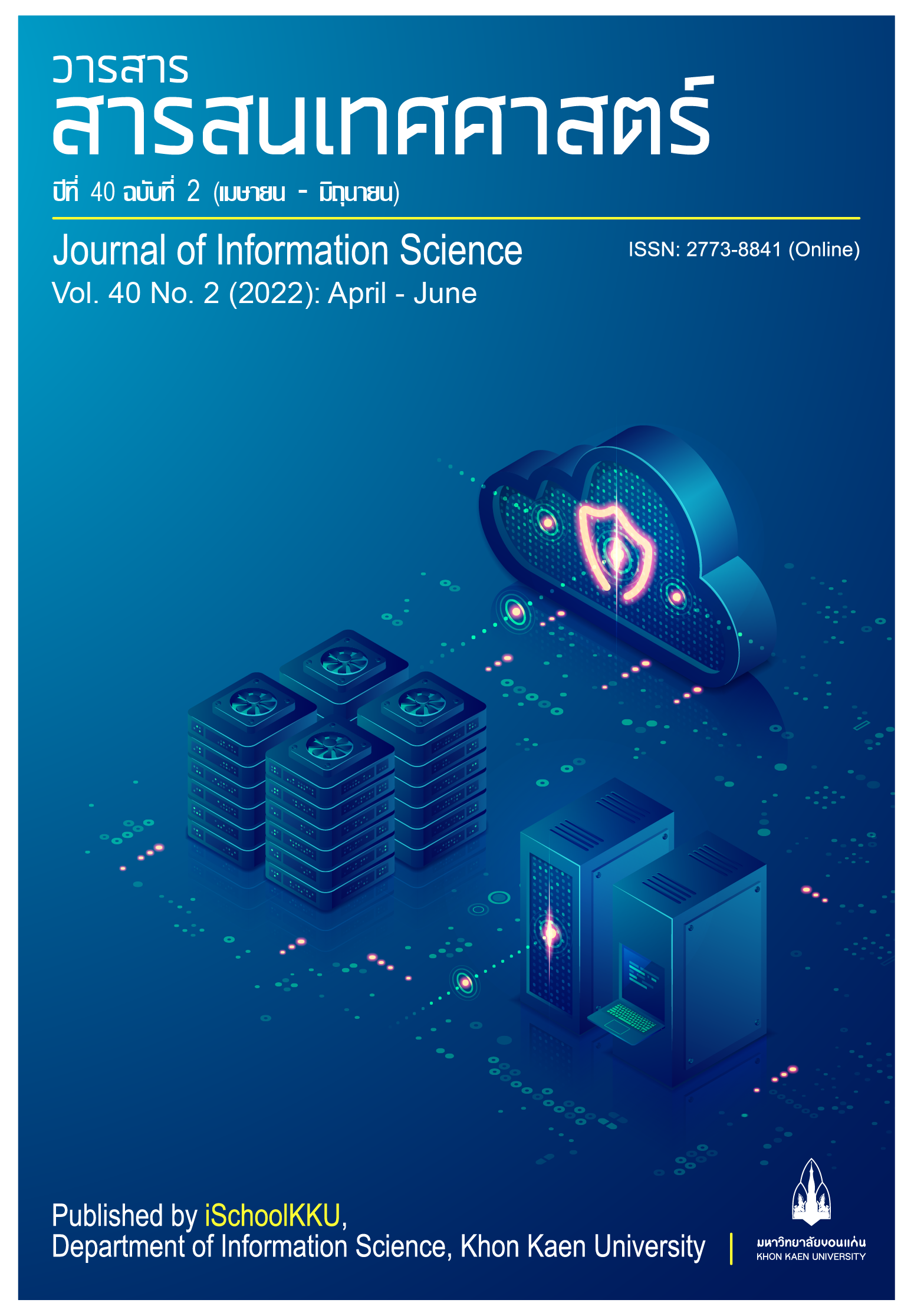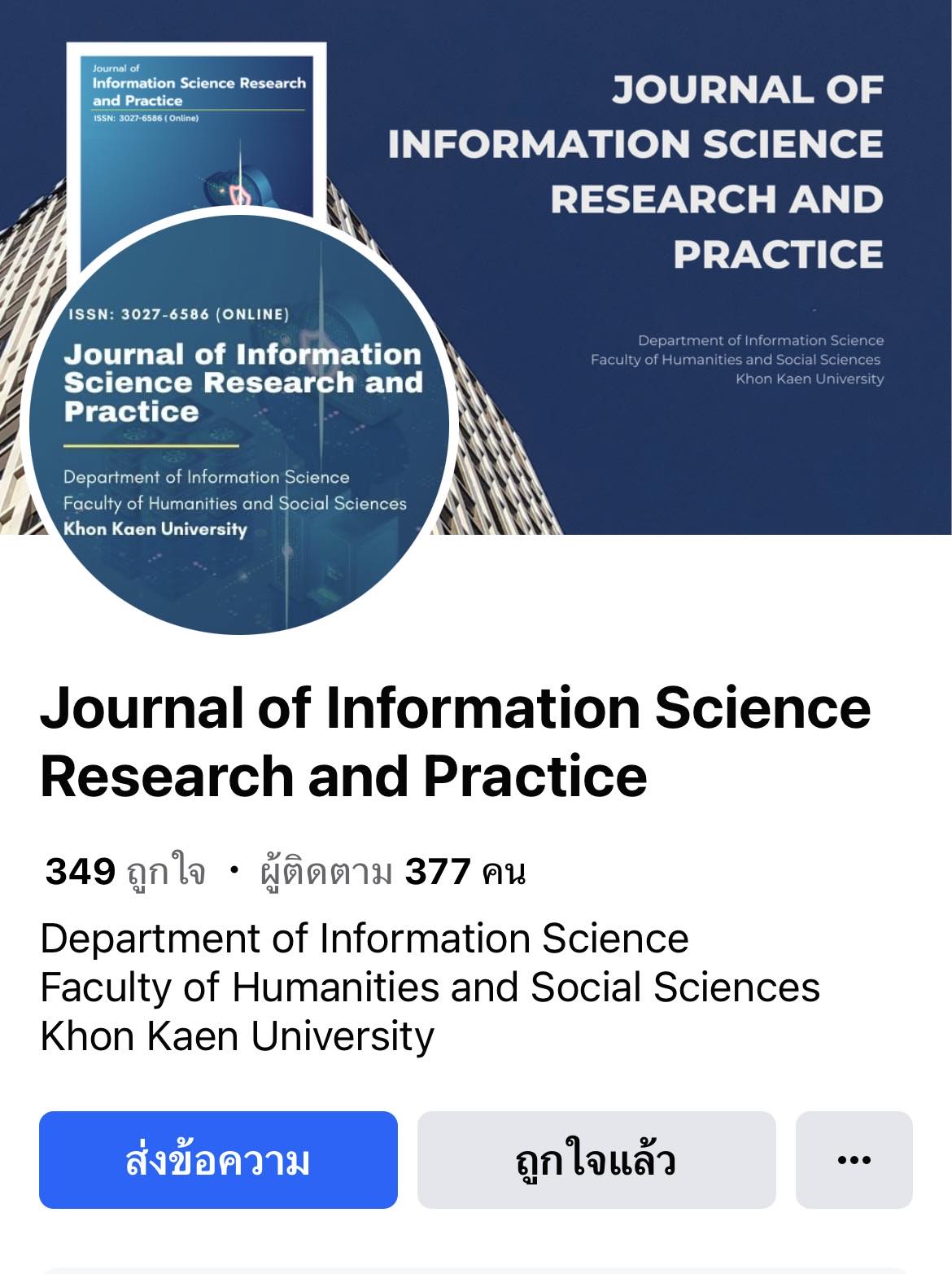Structural Equation Model of Factors Affecting the Digital Transformation of Industrial Business in Rayong Province
DOI:
https://doi.org/10.14456/jiskku.2022.9Keywords:
Structural Equation Model, Factors, Digital Transformation, Industrial BusinessAbstract
Purpose: This investigation focuses on the development of structural equation model of factors affecting the digital transformation of industrial business in Rayong province.
Methodology: The indicators were derived from a review of related literature and research papers. The data were collected from a sample of 304 top executive operators or their representatives of the industrial business in the province. The research instrument for measurement was a five-point scale questionnaire, and the data were analyzed using structural equation modeling.
Main Findings: The study findings indicated that the structural equation model of factors impacting the success of industrial business in Rayong province corresponded to the literature and empirical studies at p-value = 0.06, CFI = 0.97, ႿGFI = 0.95, AGFI = 0.93, RMR = 0.04, SRMR = 0.04, RMSEA = 0.03, and p =.01 which met the criteria set for the results of variable analysis in the newly developed model. When considering overall effect of the model, it was found that transformation in leadership, organization and staff had a significantly direct effect of the success of digitization with the highest impact being the organization (TE = 0.l33), followed by the staff (TE = 0.21), and the leadership (TE = 0.14). Moreover, the leadership had indirect effect on the digitization success through the organization (IE = 0.18) and the staff (IE = 0.10)
Applications of the study: This study provides awareness of factors impacting digital transformation of the industrial business sector in Rayong province. This transformation is not only a part of its objective achievement but also a business advantage over competitors in order to stay alive in business. In addition, the findings of this investigation can be used in industrial business elsewhere.
Downloads
References
Asenov, A. (2019). Modern trends in staff management. Journal Socio-Economic Analyses, 13(2), 123-129.
Bilgeri, D., Wortmann, F., & Fleisch, E. (2017). How digital transformation affects large manufacturing companies’ organizations. In International Conference on Information Systems (ICIS), Seoul: University of St. Gallen.
Bongiorno, G., Rizzo, D., & Vaia, G. (2018). CIOs and the digital transformation: a new leadership role. New York: Springer International Publishing.
Bradley, K. (2007). Defining digital sustainability. Library Trends, 56(1), 148-163.
Burns, J. M. (2003). Transforming leadership: a new pursuit of happiness. New York: Atlantic Monthly Press.
Comrey, A. L., & Lee, H. B. (2016). A first course in factor analysis. 2nd ed. New York: Psychology Press.
Department of Industrial Works. (2020). Industrial statistics. (In Thai). Retrieved 2 February 2021 from https://www.diw.go.th/hawk/content.php?mode=spss63
Ebert, C., & Duarte, C. H. C. (2018). Digital transformation. IEEE Software, 35(4), 16-21.
Fenech, R., Baguant, P., & Ivanov, D. (2019). The changing role of human resource management in an era of digital transformation. Journal of Management Information and Decision Sciences, 22(2), 1-10.
Foerster-Metz, U. S., Marquardt, K., Golowko, N., Kompalla, A., & Hell, C. (2018). Digital transformation and its implications on organizational behavior. Journal of EU Research in Business, 2018(S3), 1-14.
Ganz, M. (2010). Leading change: leadership, organization, and social movements. Handbook of Leadership Theory and Practice. Ed. Nitin Nohria and Rakesh Khurana: Harvard Business School Press.
Hair, J. F., Black, W. C., Babin, B. J., & Anderson, R. E. (2010). Multivariate data analysis. 7th ed. Upper saddle River, NJ: Pearson Education International.
Ifenthaler, D., & Egloffstein, M. (2020). Development and implementation of a maturity model of digital transformation. TechTrends, 64(2), 302-309.
Jha, S., & Bhattacharyya, S. S. (2020). Moderated mediation analysis of leader technology orientation: a study of operations and manufacturing leaders of India. Journal of Operations and Strategic Planning, 3(1), 58-80.
Joshi, A., Kale, S., Chandel, S. & Pal, D.K. (2015). Likert scale: explored and explained. British Journal of Applied Science & Technology, 7(4), 396.
Khan, S. (2016). Leadership in the digital age: a study on the effects of digitalization on top management leadership. Master’s dissertation, Stockholm University, Stockholm, Sweden.
Kiron, D., Kane, G. C., Palmer, D., Phillips, A. N., & Buckley, N. (2016). Aligning the organization for its digital future. MIT Sloan Management Review, 58(1), 1-30.
Kotarba, M. (2018). Digital transformation of business models. Foundations of Management, 10(1), 123-142.
Nadeem, A., Abedin, B., Cerpa, N., & Chew, E. (2018). Digital transformation & digital business strategy in the electronic commerce-the role of organizational capabilities. Journal of Theoretical and Applied Electronic Commerce Research, 13(2), I-VIII.
Nunnally, J. C. (1978). Psychometric theory. New York: McGraw.
Prasertrattasin. (2008). Multivariate analysis techniques for social and behavioral science research. In Thai). 6th ed. Bangkok: Samlada.
Reis, J., Amorim, M., Melão, N., & Matos, P. (2018, March). Digital transformation: a literature review and guidelines for future research. In World conference on information systems and technologies. Naples, Italy.
Rivera-Ruiz, I., & Ferrer-Moreno, E. (2015). The relationship between strategic leadership, human IT infrastructure, project management, project success, and firm performance. International Journal of Information, Business and Management, 7(2), 77.
Rovinelli, R. J., & Hambleton, R. K. (1977). On the use of content specialists in the assessment of criterion referenced test item validity. Dutch Journal of Educational Research, 2(2), 49-60.
Schumacker, R. E., & Lomax, R. G. (2010). A beginner’s guide to structural equation modeling. New York: Routledge.
Schwarzmüller, T., Brosi, P., Duman, D., & Welpe, I. M. (2018). How does the digital transformation affect organizations? key themes of change in work design and leadership. Mrev management revue, 29(2), 114-138.
Schwertner, K. (2017). Digital transformation of business. Trakia Journal of Sciences, 15(1), 388-393.
Seetharaman, P. (2020). Business models shifts: Impact of Covid-19. International Journal of Information Management, 54, 102173.
Silpcharu. (2014). Statistical research and analysis with SPSS and AMOS. (In Thai). 15th ed. Bangkok. Business R&D.
Solis, B., Li, C., & Szymanski, J. (2014). The 2014 state of digital transformation. Altimeter Group, 1(1), 1-33.
Sow, M., & Aborbie, S. (2018). Impact of leadership on digital transformation. Business and Economic Research, 8(3), 139-148.
Stonehouse, G. H., & Konina, N. Y. (2020). Management challenges in the age of digital disruption. In Proceedings of the 1st
International Conference on Emerging Trends and Challenges in the Management Theory and Practice (ETCMTP 2019), Advances in Economics, Business and Management Research.
Tabachnick, B. G., & Fidell, L. S. (2007). Using multivariate statistics. Boston, MA: Pearson Education.
Wade, M., & Obwegeser, N. (2019). How to choose the right digital leader for your company. MIT Sloan Management Review, 60(4), 1-4.
Winkowska, J., Szpilko, D., & Pejić, S. (2019). Smart city concept in the light of the literature review. Engineering Management in Production and Services, 11(2), 70-86.
Wolf, M., Semm, A., & Erfurth, C. (2018, June). Digital transformation in companies–challenges and success factors. In International Conference on Innovations for Community Services. Springer, Cham.








